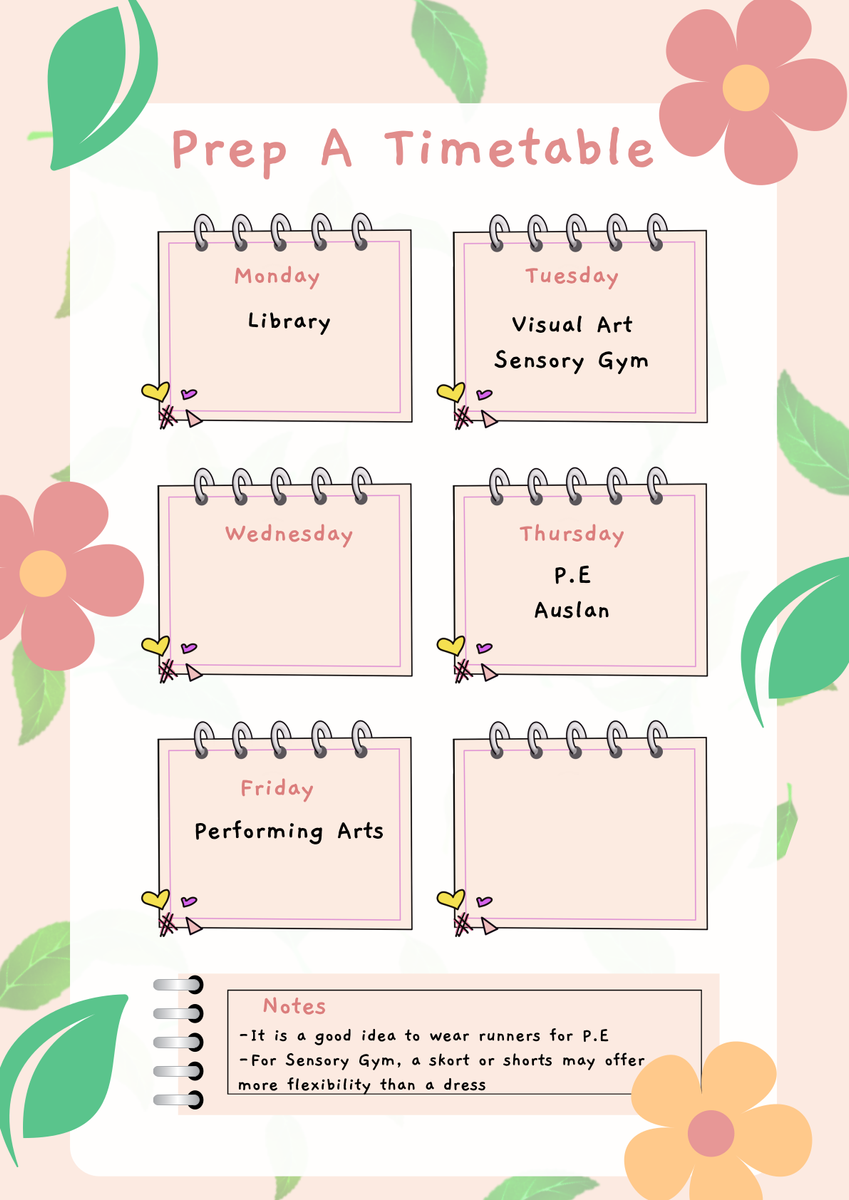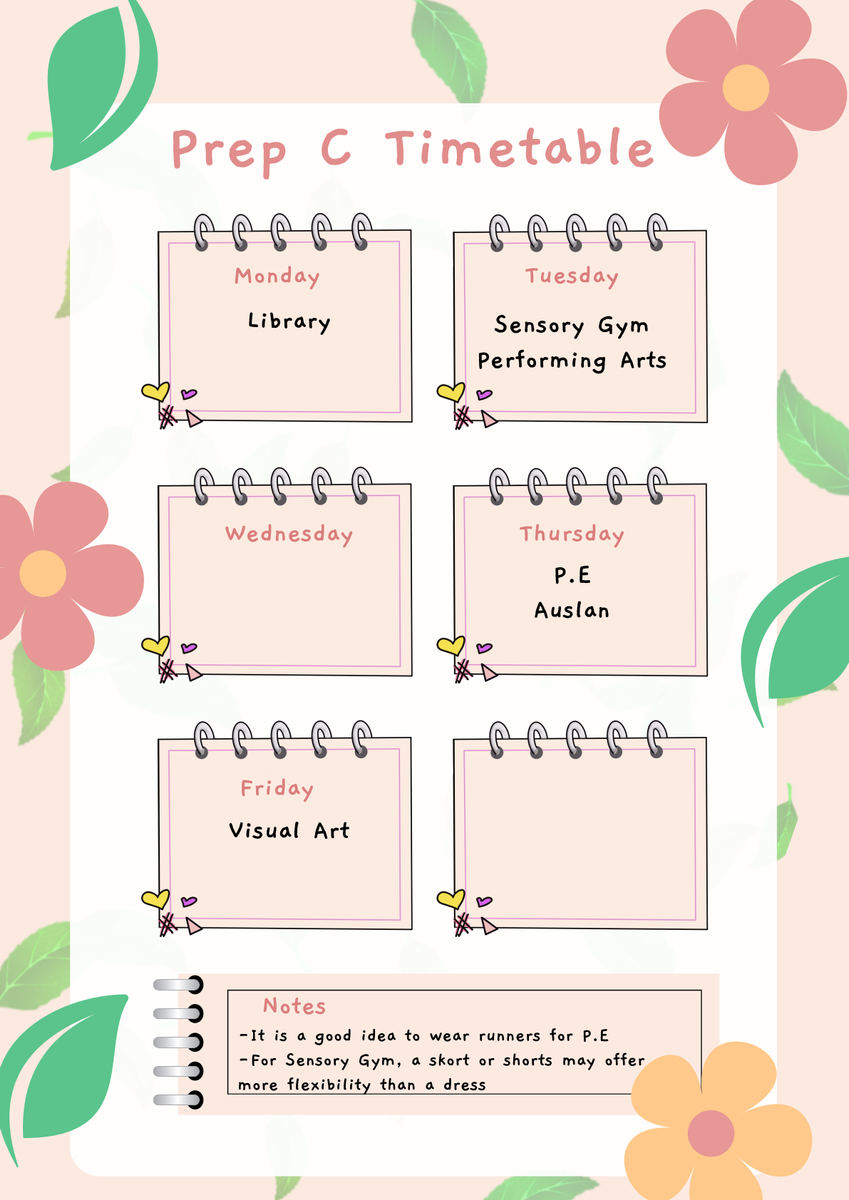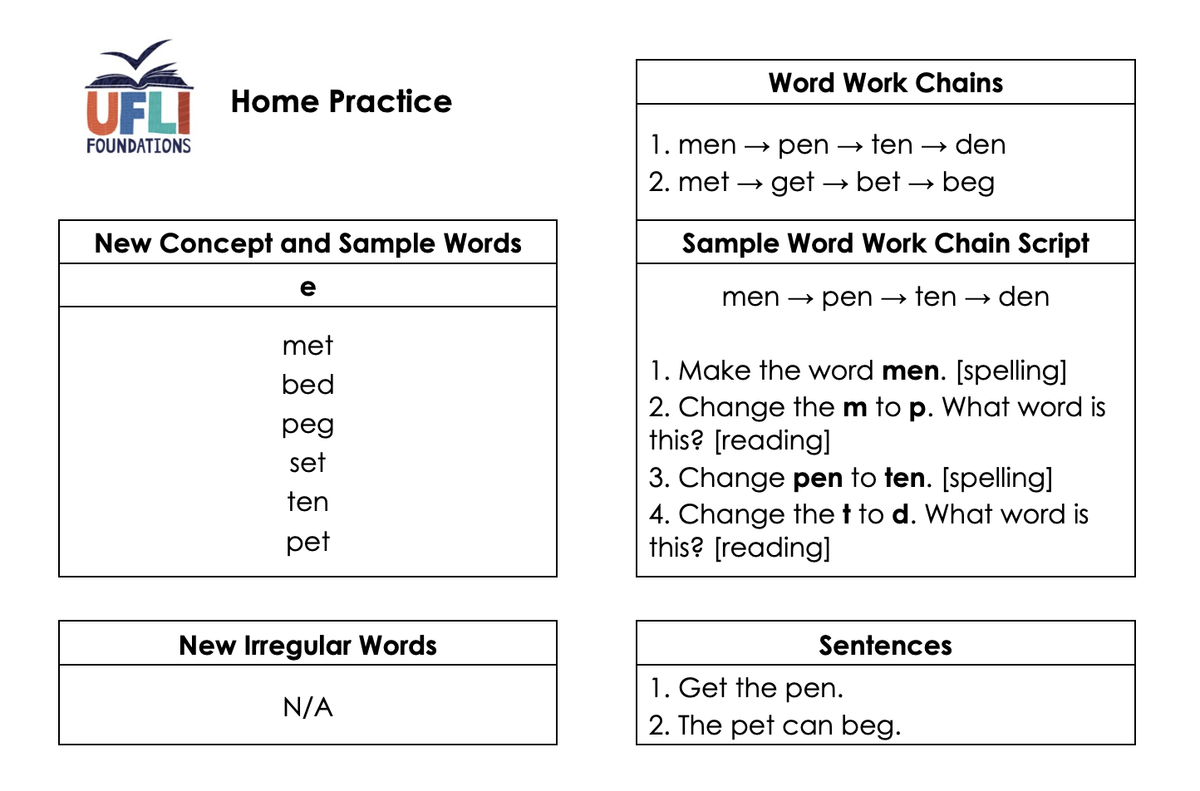Prep Wonga Weekly
Week 4, Term 2

Prep Wonga Weekly
Week 4, Term 2
INFORMATION
🗓️ Upcoming Dates:
Thursday 15th May: Volunteer Childsafe Session (online) 5-5.30pm
May 19th May: Curriculum Day
📱Screen time on iPads - please read
Students have been absolutely loving the excitement of bringing their iPads to school! It’s been wonderful to see how responsible they’ve been with their devices, and how enthusiastically they’ve embraced using them as tools to support and enhance their learning.
A little note about screen time settings: we completely understand that screen time limits are an important tool for families to help manage technology use at home. However, during school hours, these settings can sometimes interrupt learning activities. To help keep things running smoothly in the classroom, we kindly ask that screen time restrictions be deactivated during school hours.
Thank you so much for your support — it makes a real difference!
🗣️ Show and Share
Topic: An Autumn Treasure


🎨 Specialist timetable






CURRICULUM
📚 Phonemic awareness: reading and phonics
We’re focusing on the letter E (as in egg) and completing a short vowel review. Students will explore the phoneme (the sound it makes), the grapheme (how it’s written with correct formation), and the matching cued articulation action.
In addition, students will practise reading and writing CVC words using all the short vowels — as by the end of this week, we’ll have learned all five short vowel sounds!
We’ll also review our Heart Words: the, and, I, a, is, as, to, do, and of, while adding a new word to our list: see.
What can you do at home?
-Help your child read the take-home book, decodable passages, or CVC word cards from their book pocket together. **Aim for fluency by the second day of reading.
-Enjoy bedtime stories with your child to build vocabulary and a love for reading.
-If you're interested in learning about Cued Articulation, you can watch this helpful video by Jane Passey (the founder), where she explains and demonstrates each sound: Cued Articulation with Jane Passey
-Work through the optional UFLI home practice pages if you’d like some extra phonics practise at home.




📝 Literature: reading responses and writing
We’re exploring the beautiful story To Stir With Love by Jess Racklyeft - a heartwarming tale that celebrates the special bond between a little girl and her gran as they bake and share meaningful moments together.
Students will complete tasks built on sequencing and questioning to support comprehension, as well as story re-telling to build confidence in oral language.
We’ll also enjoy The Family Hour in Australia by Tai Snaith as a complementary read-aloud. From this book, students will learn about various animal families and record one picture fact about each, linking our understanding of family structures to the wider natural world.
In writing, we will be using the letters that we have learnt to write simple sentences inspired by picture prompts and our imaginations!
Students will also practice handwriting with a focus on the letter E, while reviewing the formation of previously learned letters.
What can you do at home?
-Play with things that develop fine motor skills like lego, playdough, drawing and building blocks.
-Help your child develop their pencil grip.
-Encourage your child to write simple sentences about a picture in a book or something they see around them.E.g. “The cat is on the mat.”
(Letters/sounds we know: A, M, S, T , P, F, I, N, O, D, C, U, G, B and E)
-Help your child sound out simple words when writing, reminding them to use the letter sounds they’ve learned.
🔢 Maths
Students will be learning about sequencing the days of the week and times of the day — including morning, lunchtime, afternoon, and night-time — and connecting them to familiar events and routines. Through activities like ordering images of daily events, sequencing parts of a story and creating simple classroom rosters and pictorial diaries, students will explore how days follow a repeating sequence, and how we use time-related language such as ‘first’, ‘next’ and ‘last’ to describe the order of events.
What can you do at home?
-Talk about the days of the week and what your family does on each day. E.g. “What do we usually do on Sunday mornings?”
-Encourage your child to use sequencing words like first, next, then, and last when describing daily routines.
-Create a simple weekly planner or calendar together to record important family events or activities.
-Chat about the different parts of the day - morning, lunchtime, afternoon, and night-time - and what usually happens during those times at home.
🌏 CBL - Diversity
We will be covering our CBL content during our literacy sessions.
💛 Wellbeing & School Wide Positive Behaviour (SWPBS)
Our SWPBS focus remains on the expectations of 'Be Kind', 'Be Safe' and ‘Be a Learner’. We have introduced a new whole school initiative that encourages positive behaviour all around the school, in and out of classrooms. Students will be given a token labelled with 'Be Kind', 'Be Safe' or ‘Be a Learner’ and they will place them in the class jar. When the jar is full, a whole class celebration will be had (during school hours). The students have already enjoyed the encouragement received when they have made safe, kind and good learning choices.